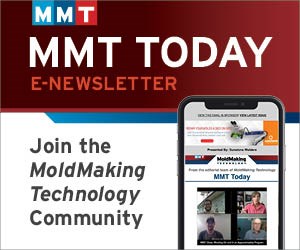Throwback Thursday: Software Advances Push Limits of Speed and Quality
This throwback article provides interesting perspectives on software for moldmaking while also illustrating how fast software technology moves today.
It’s Throwback Thursday, and I thought it might be interesting to review the way software products have influenced the moldmaking industry in recent years. Today’s throwback feature is titled “Software Advances Push Limits of Speed and Quality,” and describes the “sophisticated features and capabilities” that were introduced five years ago, “enabling mold manufacturers to produce the highest quality work in the most compressed leadtimes to date.”
This feature covers software challenges, particularly in CAD/CAM, and then gives readers a sense of the advancements being made with regard to multi-axis machining programs, intelligent toolpath development and the use of automation in the mold design and manufacturing process (including features like collision avoidance).
Here’s my main motivation for sharing this article: In the January issue of MMT, watch for an update on trends, challenges and solutions in software for moldmaking. We have several supplier companies who have offered insights about today’s use of CAD/CAM, simulation and job tracking and what they are doing to make their products more versatile, efficient and easy to use.
Related Content
-
Plastic Injection Molding Starts with the Pellet
This summer, let’s get back to the basics. For this summer school basics series, Pellet to Part explores each stage of the plastic injection molding process. This week: what every moldmaker should know about raw materials, including the fundamentals of viscosity curves, Melt Flow Index, Melt Flow Rate, shear and more.
-
Best Practices for Hitting Critical Numbers: Communication and the Shrinkage Factor
Start with an upfront review, discussion and collaboration with the customer and then consider the shrinkage factor.
-
Tips for Tackling Mold Design, Machining, Cutting Tool and Wear Challenges
Tips for tasks ranging from reducing risk in part design and taking advantage of five-axis machining to refining cutting tool performance and reducing wear with guiding and centering systems.












